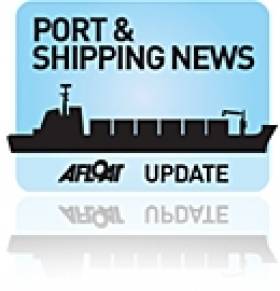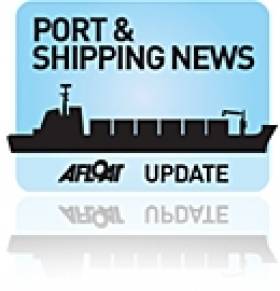Royal Irish Yacht Club - Frequently Asked Questions
The Royal Irish Yacht Club is situated in a central location in Dun Laoghaire Harbour with excellent access and visiting sailors can be sure of a special welcome. The clubhouse is located in the prime middle ground of the harbour in front of the town marina and it is Dun Laoghaire's oldest yacht club.
What's a brief history of the Royal Irish Yacht Club?
The yacht club was founded in 1831, with the Marquess of Anglesey, who commanded the cavalry at the Battle of Waterloo being its first Commodore.
John Skipton Mulvany designed the clubhouse, which still retains a number of original architectural features since being opened in 1851.
It was granted an ensign by the Admiralty of a white ensign with the Coat of Arms of the Kingdom of Ireland beneath the Union Jack in canton.
Many prominent names feature among the past members of the Club. The first Duke of Wellington was elected in 1833, followed by other illustrious men including the eccentric Admiral Sir Charles Napier, Sir Dominic Corrigan the distinguished physician, Sir Thomas Lipton, novelist, George A. Birmingham, yachtsman and author, Conor O'Brien, and famous naval historian and author, Patrick O Brian.
In the club's constitution, it was unique among yacht clubs in that it required yacht owners to provide the club's commodore with information about the coast and any deep-sea fisheries they encountered on all of their voyages.
In 1846, the club was granted permission to use the Royal prefix by Queen Victoria. The club built a new clubhouse in 1851. Despite the Republic of Ireland breaking away from the United Kingdom, the Royal Irish Yacht Club elected to retain its Royal title.
In 1848, a yachting trophy called "Her Majesty's Plate" was established by Queen Victoria to be contested at Kingstown where the Royal Irish Yacht Club is based. The Lord-Lieutenant of Ireland at the time, George Villiers, 4th Earl of Clarendon suggested it should be contested by the Royal Irish Yacht Club and the Royal St. George Yacht Club in an annual regatta, a suggestion that was approved by both clubs with the Royal St. George hosting the first competitive regatta.
The RIYC celebrated its 185th Anniversary in 2016 with the staging of several special events in addition to being well represented afloat, both nationally and internationally. It was the year the club was also awarded Irish Yacht Club of the Year as Afloat's W M Nixon details here.
The building is now a listed structure and retains to this day all its original architectural features combined with state of the art facilities for sailors both ashore and afloat.
What is the Royal Irish Yacht Club's emblem?
The Club's emblem shows a harp with the figure of Nice, the Greek winged goddess of victory, surmounted by a crown. This emblem has remained unchanged since the foundation of the Club; a symbol of continuity and respect for the history and tradition of the Royal Irish Yacht Club.
What is the Royal Irish Yacht Club's ensign?
The RIYC's original white ensign was granted by Royal Warrant in 1831. Though the Royal Irish Yacht Club later changed the ensign to remove the St George's Cross and replace the Union Jack with the tricolour of the Republic of Ireland, the original ensign may still be used by British members of the Royal Irish Yacht Club
Who is the Commodore of the Royal Irish Yacht Club?
The current Commodore is Jerry Dowling, and the Vice-Commodore is Tim Carpenter.
The RIYC Flag Officers are:
What reciprocal club arrangements does the Royal Irish Yacht Club have?
As one of Ireland's leading club's, the Royal Irish Yacht Club has significant reciprocal arrangements with yacht clubs across Ireland and the UK, Europe, USA and Canada and the rest of the World. If you are visiting from another Club, please have with a letter of introduction from your Club or introduce yourself to the Club Secretary or to a member of management staff, who will show you the Club's facilities.
What car parking does the Royal Irish Yacht Club have at its Dun Laoghaire clubhouse?
The RIYC has car parking outside of its clubhouse for the use of its members. Paid public car parking is available next door to the club at the marina car park. There is also paid parking on offer within the harbour area at the Coatl Harbour (a 5-minute walk) and at an underground car park adjacent to the Royal St. George Yacht Club (a 3-minute walk). Look for parking signs. Clamping is in operation in the harbour area.
What facilities does the Royal Irish Yacht Clubhouse offer?
The Royal Irish Yacht Club offers a relaxed, warm and welcoming atmosphere in one of the best situated and appointed clubhouses in these islands. Its prestige in yachting circles is high and its annual regatta remains one of the most attractive events in the sailing calendar. It offers both casual and formal dining with an extensive wine list and full bar facilities. The Club caters for parties, informal events, educational seminars, themed dinners and all occasions. The RIYC has a number of venues within the Club each of which provides a different ambience to match particular needs.
What are the Royal Irish Yacht Club's Boathouse facilities?
The RIYC boathouse team run the launch service to the club's swinging moorings, provide lifting for dry-sailed boats, lift and scrub boats, as well as maintaining the fabric of the deck, pontoon infrastructure, and swinging moorings. They also maintain the club crane, the only such mobile crane of the Dun Laoghaire Yacht Clubs.
What facilities are offered for junior sailing at the Royal Irish Yacht Club?
One of the missions of the Royal Irish Yacht Club is to promote sailing as a passion for life by encouraging children and young adults to learn how to sail through its summer courses and class-specific training throughout the year.
RIYC has an active junior section. Its summer sailing courses are very popular and the club regularly has over 50 children attending courses in any week. The aim is for those children to develop lifelong friendships through sailing with other children in the club, and across the other clubs in the bay.
Many RIYC children go on to compete for the club at regional and national championships and some have gone on to represent Ireland at international competitions and the Olympic Regatta itself.
In supporting its young sailors and the wider sailing community, the RIYC regularly hosts junior sailing events including national and regional championships in classes such as the Optmist, Feva and 29er.
Competition is not everything though and as the club website states: "Many of our junior sailors have gone on the become sailing instructors and enjoy teaching both in Ireland and abroad. Ultimately, we take most pleasure from the number of junior sailors who become adult sailors and enjoy a lifetime of sailing with the club".


























































